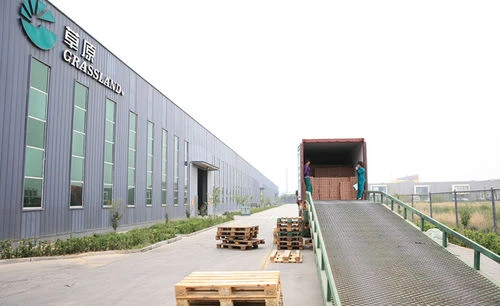Current location:what is a grinder flap disc >>Text
what is a grinder flap disc
disc for cutting stone354People have read
IntroductionTypes of Abrasives Used in Grinding Wheels Grinding wheels are essential tools in the manufacturing ...

Types of Abrasives Used in Grinding Wheels Grinding wheels are essential tools in the manufacturing and metalworking industries, playing a crucial role in the process of shaping, finishing, and enhancing the properties of various materials. At the heart of these wheels lies the abrasive material, which determines the effectiveness, durability, and application of the grinding wheel. Understanding the types of abrasives used in grinding wheels can help manufacturers choose the right wheel for their specific needs, ensuring optimal performance and results. 1. Aluminum Oxide Aluminum oxide is one of the most common abrasives used in grinding wheels. Known for its durability and versatility, this abrasive is ideal for grinding ferrous metals and is commonly found in tools such as grinding, sanding, and cutting wheels. Aluminum oxide can be used in various forms, including white, brown, and pink, each offering distinct properties. For instance, white aluminum oxide is finer and offers a smoother finish, making it perfect for precision grinding applications, while brown aluminum oxide is tougher and better suited for general-purpose grinding. 2. Silicon Carbide Silicon carbide is another widely used abrasive material, particularly suitable for grinding non-ferrous metals, ceramics, and glass. It is known for its sharpness and long-lasting performance. Silicon carbide grains are generally harder than those of aluminum oxide, which makes them ideal for working on materials that require a finer finish. Green silicon carbide is one of the most commonly used forms, providing excellent cutting performance and reducing the chances of overheating during the grinding process. 3. Cubic Boron Nitride (CBN) Cubic boron nitride is a synthetic abrasive that is favored for its exceptional hardness and thermal stability. CBN grinding wheels are particularly effective for grinding hardened steels and other hard materials. Unlike diamond, which can be quite expensive, CBN offers a cost-effective alternative that can withstand high temperatures without degrading . This makes it a preferred choice for precision grinding applications, such as tool and die manufacturing. types of abrasives used in grinding wheels 4. Diamond Diamond abrasives are known for their unparalleled hardness and cutting efficiency, making them an invaluable component in specialized grinding wheels. These wheels are typically used for grinding hard materials such as ceramics, quartz, and various types of composite materials. The use of diamond abrasives allows for precision cutting, reduced grinding forces, and longer wheel life. However, due to their high cost, diamond wheels are often reserved for specific applications where performance outweighs the price. 5. Garnet Garnet is a naturally occurring mineral that is often used as an abrasive in grinding wheels designed for wood and soft materials. It is less aggressive than aluminum oxide or silicon carbide, providing a finer finish suitable for applications such as sanding and polishing. Garnet grinding wheels are preferred in woodworking and furniture manufacturing, where a smooth surface is crucial. 6. Zirconia Alumina Zirconia alumina is a premium abrasive that combines the toughness of zirconia with the sharpness of aluminum oxide. It is commonly used in heavy-duty grinding applications, particularly on hard metals and for weld preparation. Grinding wheels made from zirconia alumina provide a high removal rate and are ideal for applications that demand both durability and performance. Conclusion The choice of abrasive material in grinding wheels significantly impacts the performance and results of grinding operations. Each type of abrasive has its unique characteristics, making it suitable for specific applications. Whether it’s aluminum oxide for general metalworking, silicon carbide for non-ferrous materials, or diamond for the hardest materials, understanding these differences can help manufacturers select the most effective grinding wheels for their needs. As technology continues to evolve, the development of new abrasive materials will further enhance grinding applications, leading to greater efficiency and improved surface finishes in a range of industries. By selecting the right abrasive, companies can achieve better productivity and higher quality results in their machining processes.
Tags:
Latest articles
aluminum oxide grinding disc
what is a grinder flap discUnderstanding Aluminum Oxide Grinding Discs The Versatile Tool for Abrasive Applications In various...
Read More
High-Performance 4% 40 Grit Flap Discs for Efficient Grinding and Finishing Applications
what is a grinder flap discThe Advantages and Applications of 4% 201/2% Flap Discs 40 Grit Flap discs have become an essential...
Read More
Best Practices for Choosing Metal Cutting Discs for Optimal Performance and Safety
what is a grinder flap discUnderstanding Cutting Discs for Metal A Comprehensive Guide When it comes to metalworking, the right...
Read More
Popular articles
- 100mm Flap Wheel for Precision Grinding and Polishing Applications
- Selecting the Best Grinding Wheel for Effective Hardened Steel Sharpening and Finishing
- 14 metal cutting disc
- grinding wheel manufacturer
- Global Abrasives Market Report (2022 to 2027) – Industry Trends
- Flap-pyörävalmistajien tuottamat laadukkaat työkalut ja niiden sovellukset teollisuudessa
Latest articles
-
5 Inch Reinforced Fiberglass Metal Cut Off Discs 125 X 3.2 X 22Mm
-
9-inch masonry cutting disc for precise and efficient stone and brick cutting tasks
-
Precision 1mm Cutting Wheel for Fine and Detailed Material Work
-
Durable Metal Grinding Discs for Precision Metalworking and Effective Surface Finishing
-
Understanding the Benefits and Applications of Zirconia Flap Discs in Metalworking
-
metal cutting disc manufacturer